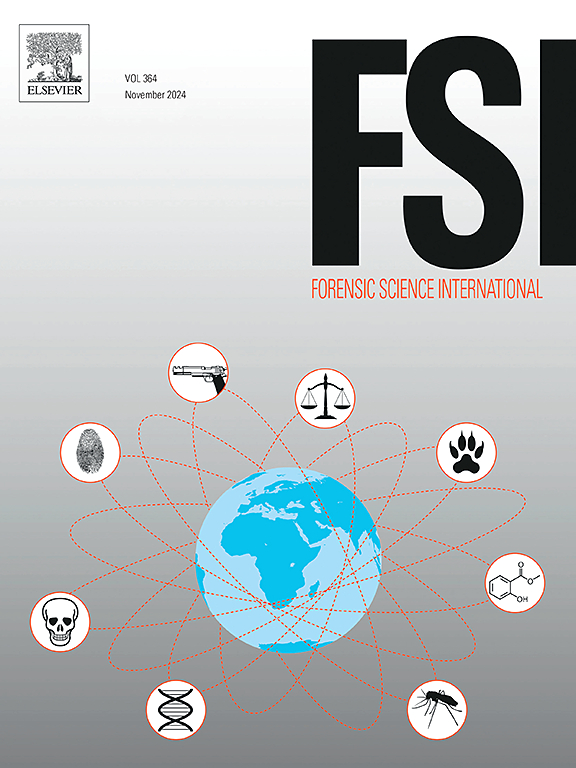用手持式激光诱导击穿光谱分析混合人类骨骼遗骸的元素剖面。
IF 2.2
3区 医学
Q1 MEDICINE, LEGAL
引用次数: 0
摘要
当多组骨骼遗骸存在于同一环境中时,由于影响死后环境的多因素因素,它们可能会混合在一起。存在许多重新关联混合骨骼遗骸的技术(例如,视觉配对和骨计量配对);然而,混合骨骼组合的规模影响了这些方法的有效性。激光诱导击穿光谱(LIBS)最近被提出作为一种快速技术,从多个个体的骨骼元素中获得元素特征,然后将这些元素与正确的个体重新关联。本研究评估了便携式LIBS作为法医背景下重新关联混合人类骨骼遗骸的有用工具的潜力。在这项研究中,从南佛罗里达大学佛罗里达法医人类学和应用科学研究所捐赠的骨骼收藏中提取的六具骨骼被用来评估LIBS数据是否可以用于重新关联来自同一个人的多个骨骼元素。LIBS数据是从样本中每个骨骼的28个个体骨骼的206个解剖位置收集的。使用二次判别分析(通过主成分分析)对降维数据进行二次判别分析,将LIBS数据重新分配给他们的个人,准确率为91 %。该研究表明,便携式LIBS具有从法医环境中重新关联混合人类骨骼遗骸的潜力。本文章由计算机程序翻译,如有差异,请以英文原文为准。
Association of commingled human skeletal remains by their elemental profile using handheld laser-induced breakdown spectroscopy
When multiple sets of skeletonized human remains exist in the same context, they can become commingled due to multifactorial circumstances that affect the postmortem environment. Numerous techniques exist for reassociating commingled skeletal remains (e.g., visual pair-matching, and osteometric pair-matching); however, the scale of commingled skeletal assemblages influences the effectiveness of these approaches. Laser-Induced Breakdown Spectroscopy (LIBS) has recently been proposed as a rapid technique for obtaining elemental signatures from skeletal elements of multiple individuals and then reassociating those elements with their correct individual. This study evaluates the potential of portable LIBS as a useful tool for reassociating commingled human skeletal remains in forensic contexts. In this study six skeletons drawn from the donated skeletal collection at the Florida Institute for Forensic Anthropology and Applied Science, at the University of South Florida, were used to assess whether LIBS data could be used to reassociate multiple skeletal elements from the same individual. LIBS data were collected at 206 anatomical locations from 28 individual bones across each skeleton in the sample. LIBS data were reassigned to their individual with an accuracy of 91 % using quadratic discriminant analysis of dimensionally reduced data (via principal component analysis). The study demonstrates that portable LIBS has potential for reassociating commingled human skeletal remains from forensic contexts.
求助全文
通过发布文献求助,成功后即可免费获取论文全文。
去求助
来源期刊

Forensic science international
医学-医学:法
CiteScore
5.00
自引率
9.10%
发文量
285
审稿时长
49 days
期刊介绍:
Forensic Science International is the flagship journal in the prestigious Forensic Science International family, publishing the most innovative, cutting-edge, and influential contributions across the forensic sciences. Fields include: forensic pathology and histochemistry, chemistry, biochemistry and toxicology, biology, serology, odontology, psychiatry, anthropology, digital forensics, the physical sciences, firearms, and document examination, as well as investigations of value to public health in its broadest sense, and the important marginal area where science and medicine interact with the law.
The journal publishes:
Case Reports
Commentaries
Letters to the Editor
Original Research Papers (Regular Papers)
Rapid Communications
Review Articles
Technical Notes.
 求助内容:
求助内容: 应助结果提醒方式:
应助结果提醒方式:


